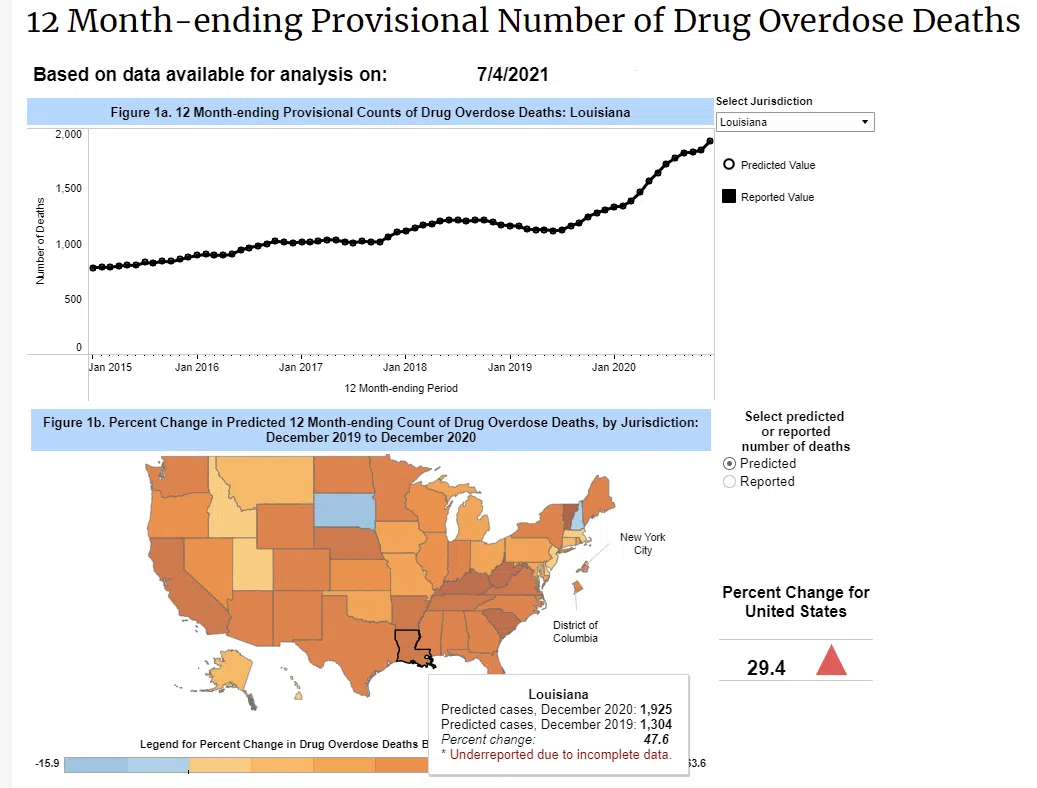A preliminary CDC report shows Louisiana suffered a shocking 47.6% predicted increase in overdose deaths in 2020 compared to 2019 while the nation as a whole saw a record 29% increase. The report estimates the nation ended the year at 93,331 predicted overdose deaths while Louisiana suffered 1,925 predicted overdose deaths.
LSU Health New Orleans Chief of Community Medicine Dr. Ben Springgate said the massive surge in overdose deaths is largely linked to economic conditions caused by the pandemic and part of an ongoing upward trend over the last half-decade.
“What’s behind it is one, many people who were at risk of using drugs or overdosing were in worse economic circumstances, they lost their jobs as a result of the pandemic, they were cut off from their social and medical support groups and as a result, they felt isolated and started using again,” said Springgate. “The second thing that makes a big difference here is that we are seeing more and more of these particularly deadly synthetic opiates, things like Fentanyl.”
Research suggests a lethal dose of Fentanyl is about ten times smaller than a lethal dose of heroin.
While the data shows nationally the number of deaths spiked in the summer months after lockdowns took effect, the first two months of 2020 were already off to record starts for year-to-year increases. The first two pre-pandemic months of 2020 began with year-to-year increases of 1,000 and 1,200 respectively according to an analysis by the New York Times.
The summer of 2020 saw the largest increases in nationwide overdose deaths year over year with a 3,600 death increase in May, 2,400 death increases in June and July, and a 2,100 death increase in August. The year-to-year increases tapered off to about an average monthly increase of about 1,200 by October, November, and December.
Springgate said the nationwide surge in overdose deaths is the most dramatic year-to-year increase ever recorded.
“According to CDC leadership that have commented on this rise in numbers, they have not seen anything since they started tracking these numbers in 1999 that is even remotely comparable,” said Springgate.








Comments